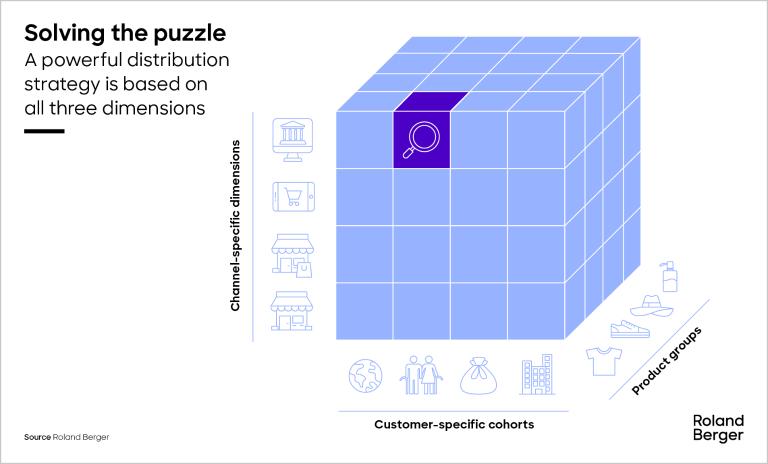Roland Berger’s latest consumer behavior report highlights the most important global trends and offers valuable insights for businesses in an uncertain period.


Rethink your distribution play
Making D2C and multi-brand channels work in the fashion and lifestyle industry
Fashion and lifestyle brands have placed an increased emphasis on direct-to-consumer (D2C) distribution in recent years. However, this period of brand-driven hype now appears to be coming to an end. Companies are facing multiple challenges regarding D2C, from cost concerns and skills gaps to communication problems, all of which are pushing them back in the direction of third-party multi-brand channels. We surveyed more than 1,800 consumers in three major markets – the United States, Germany and Japan – to find out about their shopping patterns and expectations of different channels. Our new study discusses key insights from the survey, draws conclusions for companies, and presents some tools that companies can use to take their distribution to the next level.

"Today's brands need an omnichannel distribution approach that leverages the strengths of both multi-brand and D2C channels, online and offline."
Challenges related to D2C are coming from all directions. On the cost side, for example, brands are having to make significant investments in technology in order to maintain online D2C sales, while at the same time meeting their working capital commitments for offline stores. Acquisition costs for new customers are also high. In addition, brands are finding it difficult to recruit staff for offline stores, or retrain staff who previously worked offline for new, online D2C positions. More generally, they face the challenge of creating a seamlessly integrated online and offline presence – essential for a smooth consumer experience.
Insights from the pulse survey
Clearly, many companies now need to rethink their distribution play. To develop a powerful strategy, we believe that brands must first fully understand their consumers . In our survey, we found that multi-brand channels remains an important consumer touchpoint across regions and demographics. All channels are relevant and today's consumers often gather information from different channels before making a purchase – a phenomenon known as "omnichannel interaction". We also discovered why some consumers prefer to shop offline (immediate availability of the product, the chance to touch and feel items before purchase), and why others prefer not to (higher prices, inconvenience, limited assortment, and so on).
A further important insight from the survey was that brands need to focus on three key dimensions when devising their distribution policy: consumers, channels and products. Leaving regional or demographic data for consumers out of the equation, for example, leads to a weak strategy. Channel preferences mainly differ by the age of the consumer. Moreover, the younger the consumer, the more likely they are to gather information from one channel and then make the actual purchase in another.
What should companies do?
We believe that, in order to be fully successful, today's brands need to pursue an omnichannel distribution approach that leverages the strengths of both wholesale and D2C channels. However, this brings a number of risks with it, such as channel conflicts between D2C and multi-brand, or an improperly aligned assortment and price strategy . Crucially, brands need to develop the ability to divine changing consumer needs. And they must ensure a seamless UX design and omnichannel experience.
Brands should ask themselves questions covering all three dimensions. For example, how well do they understand their consumers and how and when they consume? How do they weigh the importance of the different channels – and do they have a clearly defined approach for each? Which products do they offer in each channel, and are their products, channel and pricing strategy offered with a specific channel strategy in mind? The answers to these questions and more will form the basis of their new distribution strategy.

How can we help?
We offer a number of tools that can help brands on their journey to next-level distribution. For instance, the Roland Berger Distribution Excellence Self-assessment Tool helps leaders judge the strength of their current strategy with the aid of three simple questions – on consumers, channels and products. If they rate themselves anywhere between one and four on a scale of one to five, we strongly recommend a strategy rethink.
To develop a distribution strategy tailored to their specific consumer needs and company situation, brands need to juggle complex information across the three dimensions. The Roland Berger Channel Strategy Cube is a powerful tool for analyzing relevant aspects and how they interact, and can help companies see their way through the confusion.
Register now to access the full study, to learn more about challenges and trends in the fashion and lifestyle industry.





